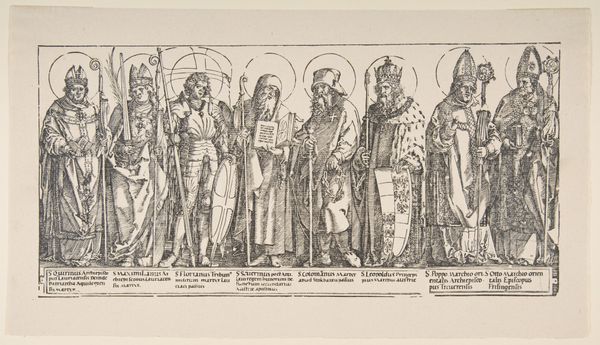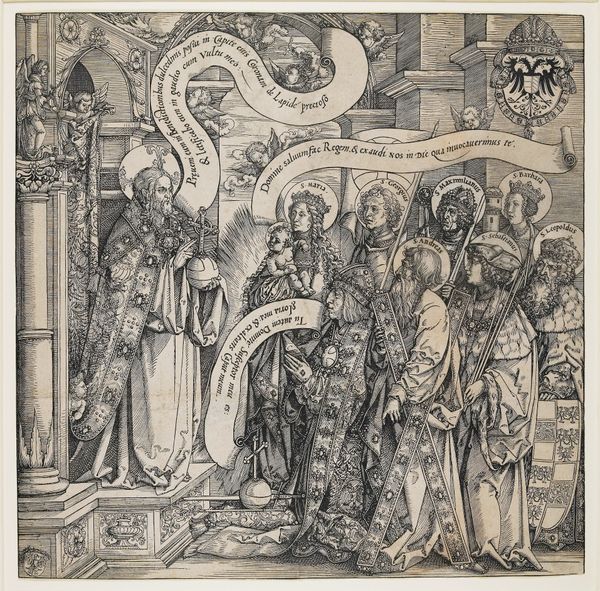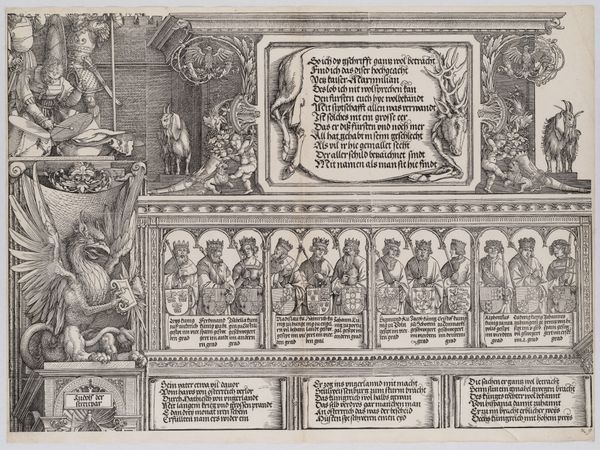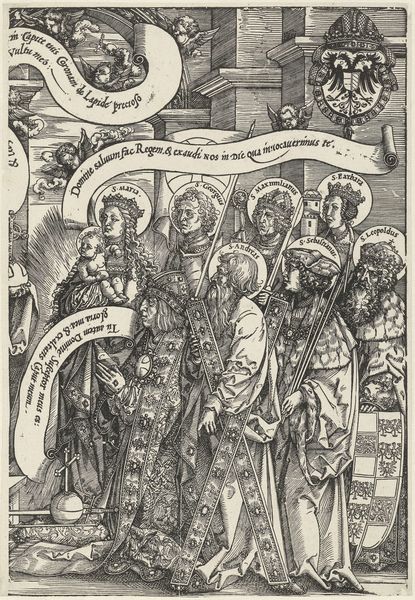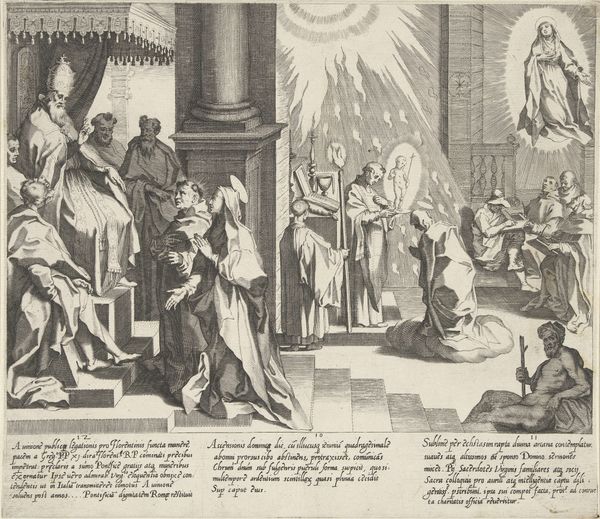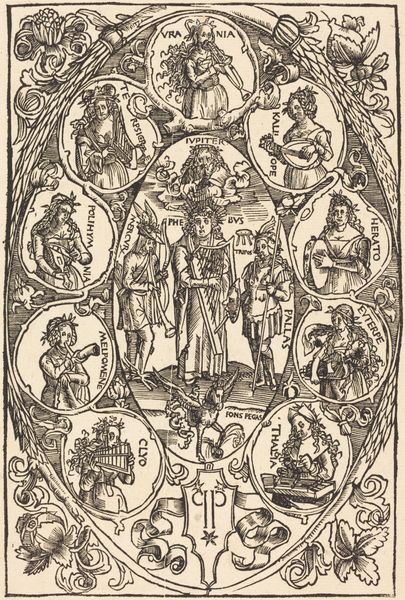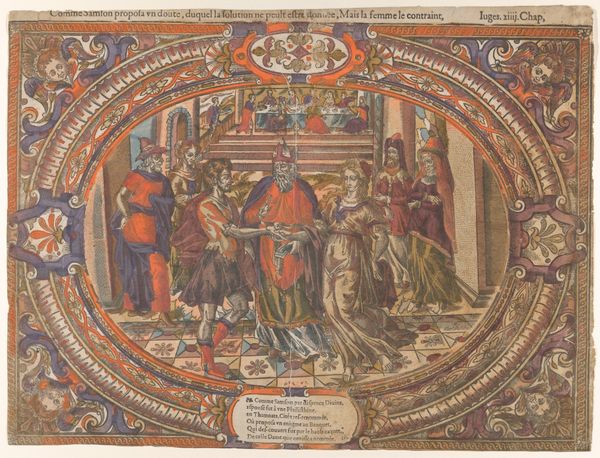
print, woodcut
# print
#
figuration
#
woodcut
#
line
#
history-painting
#
northern-renaissance
Dimensions: 265 mm (height) x 360 mm (width) (bladmaal)
Albrecht Dürer’s “The Austrian Saints” was made in 1517 using the process of woodcut. This printmaking technique involves carving an image into a block of wood, applying ink to the raised surface, and then pressing it onto paper. The material qualities of the woodblock, with its inherent grain and the limitations of carving, directly influence the image’s appearance. Look closely, and you will notice that the figures are delineated by bold, graphic lines, giving them a strong, almost monumental presence. The texture of the paper also plays a role, adding a tactile dimension to the print. The production of woodcuts in Dürer’s time was tied to the rise of the printing press and the increasing demand for visual images. This work engages with skilled traditions within both art and craft, alongside the broader social issues of production and consumption. It involved a considerable amount of labor, from the felling of the tree to the meticulous carving and printing. By appreciating the materials, making, and context, we can understand the full meaning of this artwork, challenging traditional distinctions between fine art and craft.
Comments
No comments
Be the first to comment and join the conversation on the ultimate creative platform.
